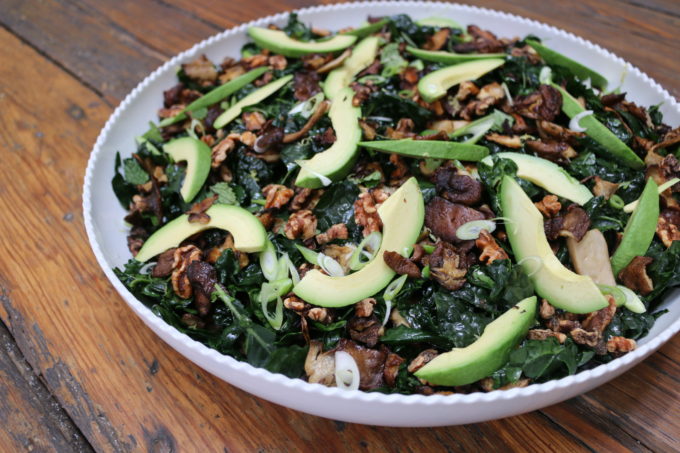
After a week eating my way through Italy, then an indulgent Thanksgiving holiday with family in New England, I was ready to be return to my own kitchen in Brooklyn on Sunday.
It’s funny that the same reason I crave vacation, namely to bust out of my well-worn routines, is the same reason I can’t wait to get home.



Because I cook for a living, being fed by others for a sustained period is heaven. No menu planning. No grocery shopping. No cooking. No dishes. Don’t get me wrong, I love what I do but we all need a break.
Before I leave, I obsessively peruse the internet, reach out to friends and read through favorite travel guides to discover the best of what’s to eat wherever I go. Then, with every delicious bite at every carefully selected restaurant, it’s like I’m consuming a little bit of that chef’s culinary point of view.
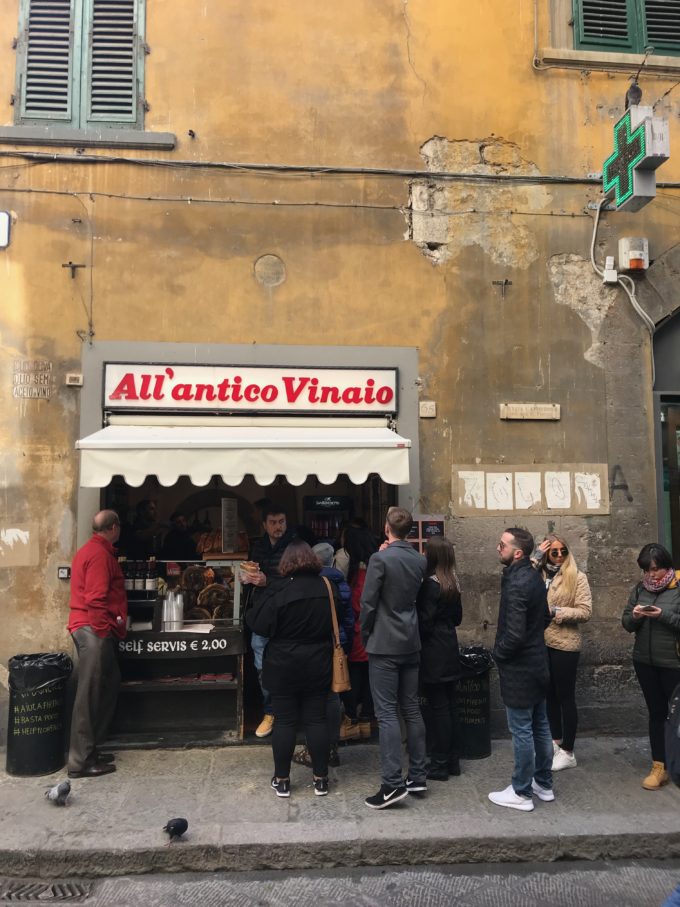
But there comes a time when I am ready to eat my food again. To return to the meal routines that work for me. Namely, meals that revolve around vegetables.
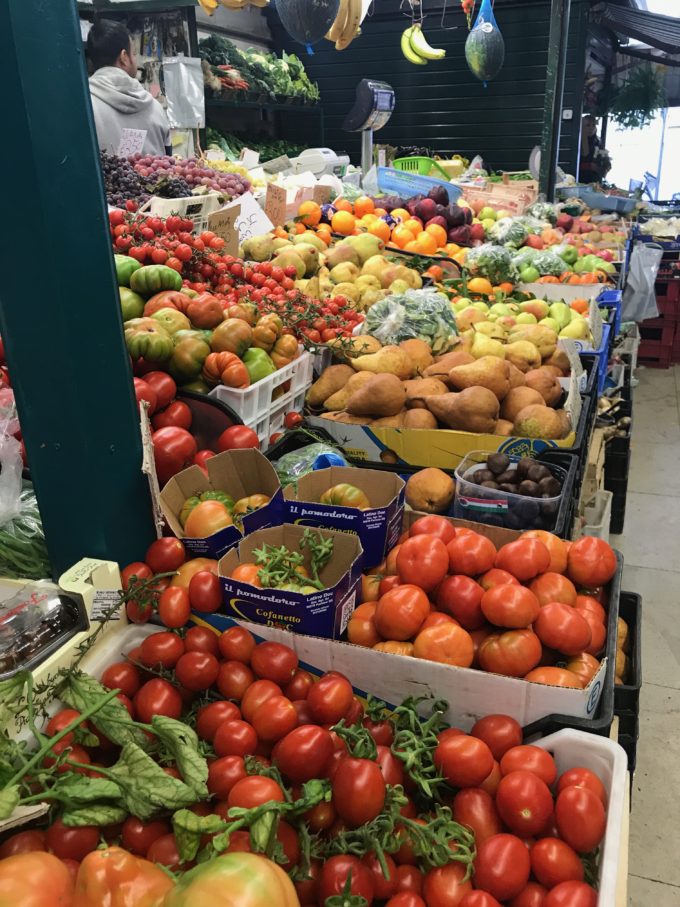
The very first thing I made when I got home was this massaged lacinato kale, roasted wild mushroom and avocado salad. It touches on all of the elements of a crave-worthy vegetable dish: ingredients that are seasonal, both raw and cooked, and vibrantly colorful, and that provide contrasting textures, a little indulgence and a few surprises.
Both kale and mushrooms are at their peak during fall and winter. In fact, kale gets better as the weather gets colder. For this salad, I roast the mushrooms to concentrate flavor, essentially transforming them into little crunchy umami bombs. I top the salad with deep red, slow-roasted cherry tomatoes for color. (I added them after taking the salad shots this time because they were still hot from the oven and I was too hungry to wait…typical.) The additions of avocado, toasted walnuts and shaved parmesan lend both contrasting texture and enough indulgence to keep me coming back for more. And finally, I finish the dish with lemon zest, thinly sliced scallions and a tiny bit of fresh mint and basil for a touch of freshness to balance the earthy mushrooms.
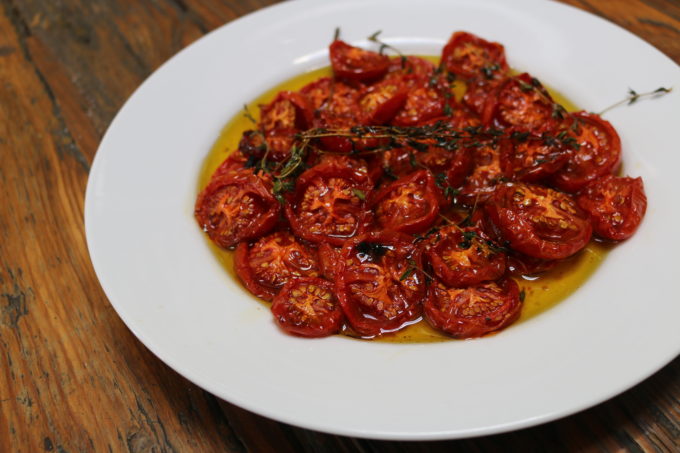
I’ve made this kale salad about a gazillion times since I first threw it together on a whim and realized I was onto something. While I see the kale, mushrooms and avocado as mandatory, all other ingredients are flex. Don’t have time to slow-roast tomatoes? Leave them out! Prefer shallots to scallions? Swap’em! #Putaneggonit and/or serve it over a cooked grain like farro to make it more of a complete meal. You get the picture.
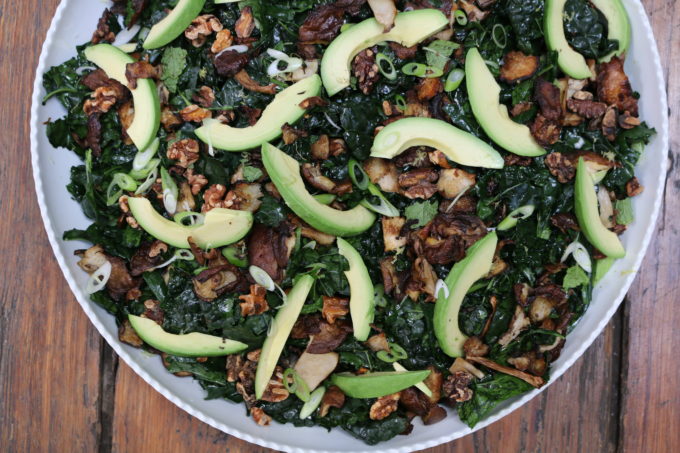
Lacinato Kale, Roasted Wild Mushroom and Avocado Salad
Ingredients
- 1.5-2 lbs mixed mushrooms (oyster, king oyster, hen of the woods and maitake are great wild varietals but the more widely available shitake is equally delicious – this will seem like a lot but they shrink up when roasted)
- Pinch red pepper flakes
- Few shakes of granulated garlic (1/2-1 tsp)
- 2 bunches lacinato kale, washed, de-stemmed and torn into bite size pieces
- 1 ripe avocado, sliced
- 1 cup slow-roasted tomatoes (optional)
- ½-1 cup toasted and chopped walnuts (hazelnuts are equally delicious)
- ½-1 cup shaved parmesan (use a vegetable peeler)
- 4 scallions, thinly sliced
- Small handful of fresh torn basil
- Small handful of fresh torn mint
- Zest and juice of 1 lemon
- 2 garlic cloves, lightly crushed
- Extra virgin olive oil
- Kosher salt and freshly cracked pepper
Method
Roast the mushrooms:
- Preheat oven to 425.
- Prep mushrooms and break them into bite-size pieces. For shitake, this means removing their stems and tearing them into halves or fourths. For king oyster, this means slicing off a tiny bit of the root end and thinly slicing them lengthwise. Prep varies by varietal so purchase shrooms you’re comfortable with or Google proper prep technique.
- Place shrooms on a sheet pan (lined with parchment for easy clean-up) and drizzle generously with olive oil, then season to taste with salt and pepper, a few shakes of granulated garlic and a pinch of red pepper flakes.
- Roast in the center of the oven for 25-35 minutes, turning the mushrooms halfway through, until they shrink down by nearly half and are very crisp around their edges. Cool on sheet tray.
Make the vinaigrette:
- Zest lemon and reserve for salad. Juice zested lemon into small bowl, add in a large pinch of salt, then drizzle in an equal amount of olive oil by volume or a little more. Add in the two crushed garlic cloves and allow to steep while finishing the rest of the salad.
Assemble the salad
- Combine the prepped kale (watch Char’s video tutorial!), cooled mushrooms, sliced avo, slow-roasted tomatoes (if using), toasted walnuts, shaved parm, sliced scallions, torn basil and mint and lemon zest in a large salad bowl. Remove garlic cloves from vinaigrette and drizzle over vegetables. Using clean hands or salad tongs, gently toss salad until every nook and cranny of every vegetable is dressed.
- Enjoy!
Serves 4 hungry peeps.
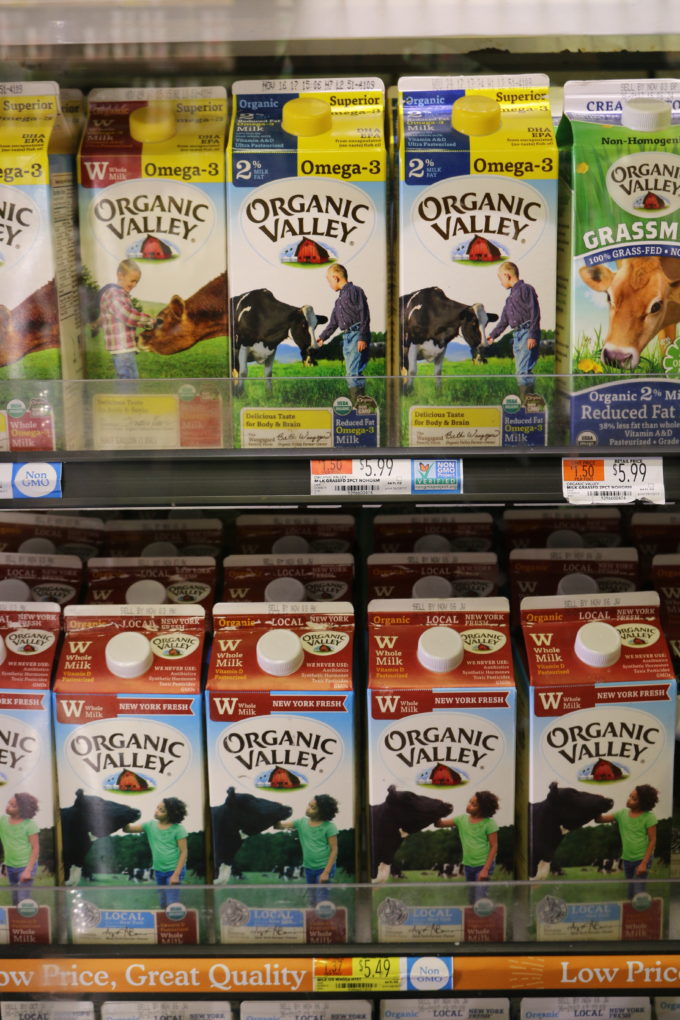
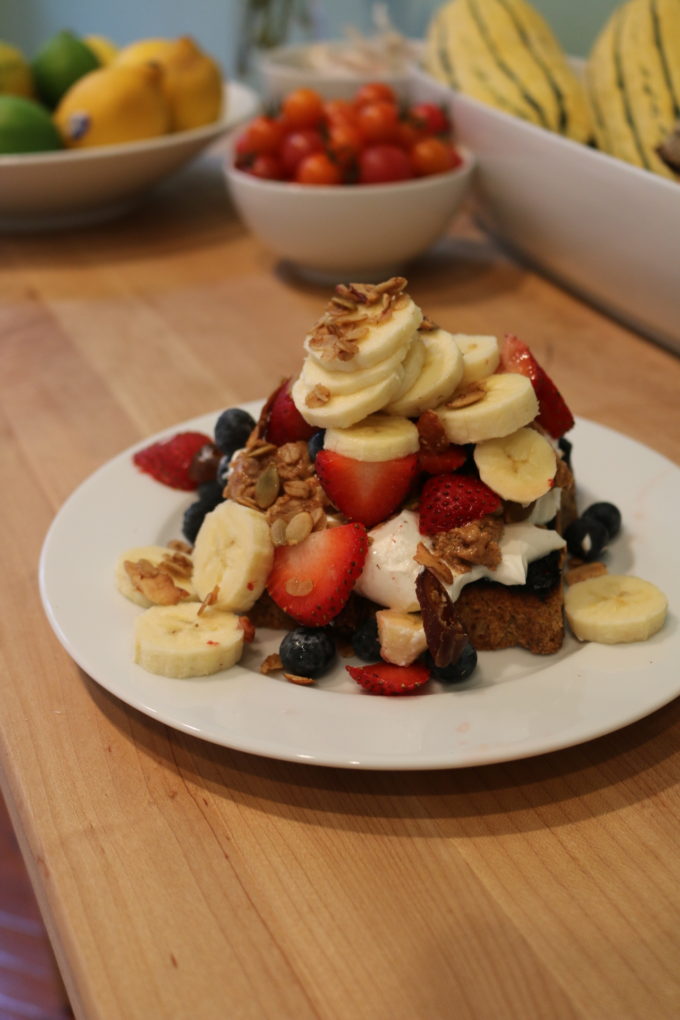
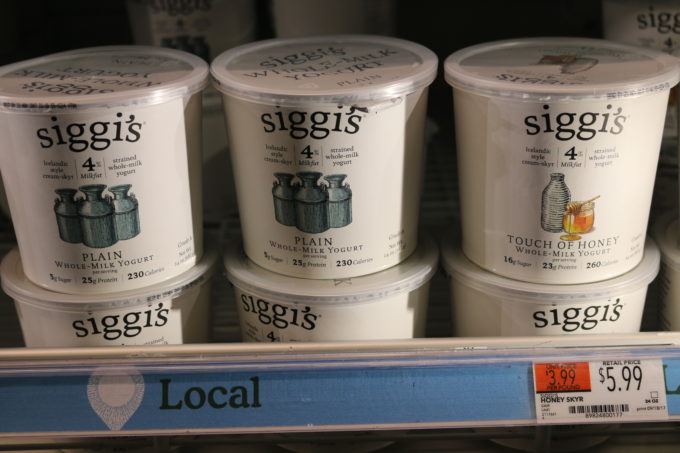
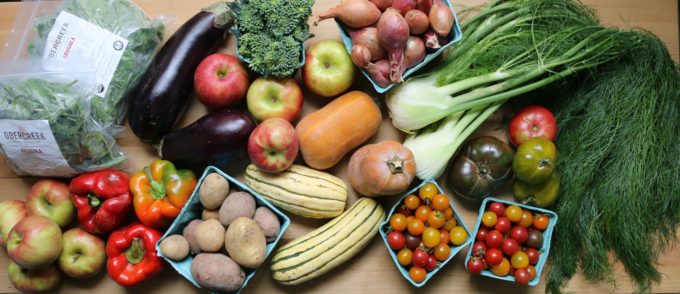
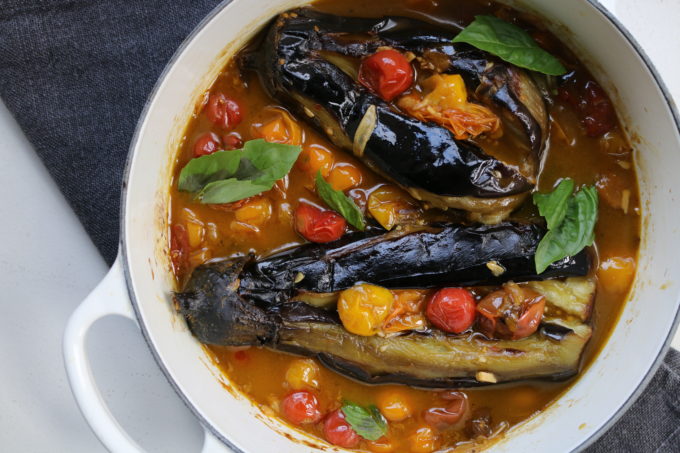
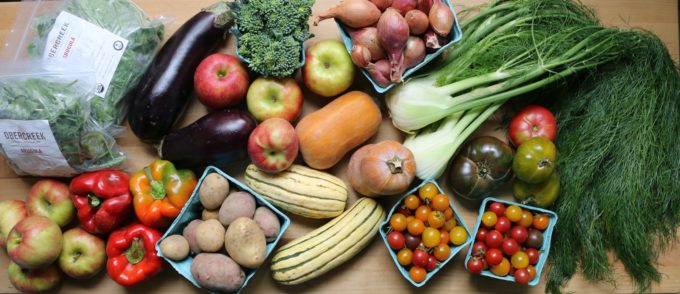
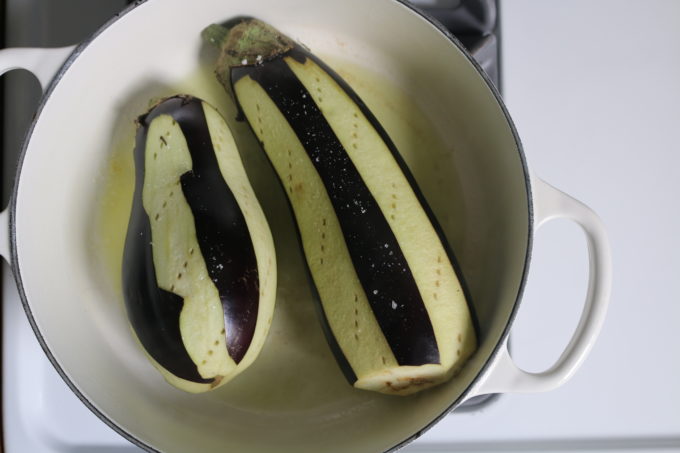
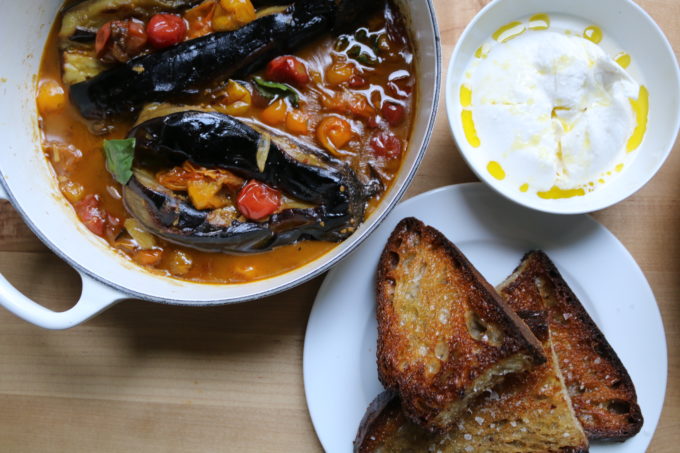
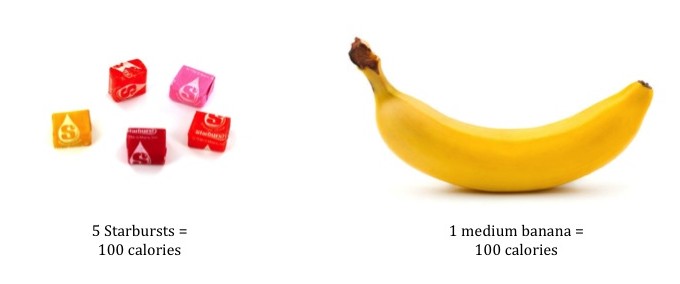 Answer 1: If you guessed the banana, you’d be right. Clearly, there is way more good stuff (vitamins, minerals, phytonutrients, etc.) per calorie in the fruit than in the fruit candy. This is what is termed “nutrient density.”
Answer 1: If you guessed the banana, you’d be right. Clearly, there is way more good stuff (vitamins, minerals, phytonutrients, etc.) per calorie in the fruit than in the fruit candy. This is what is termed “nutrient density.”
